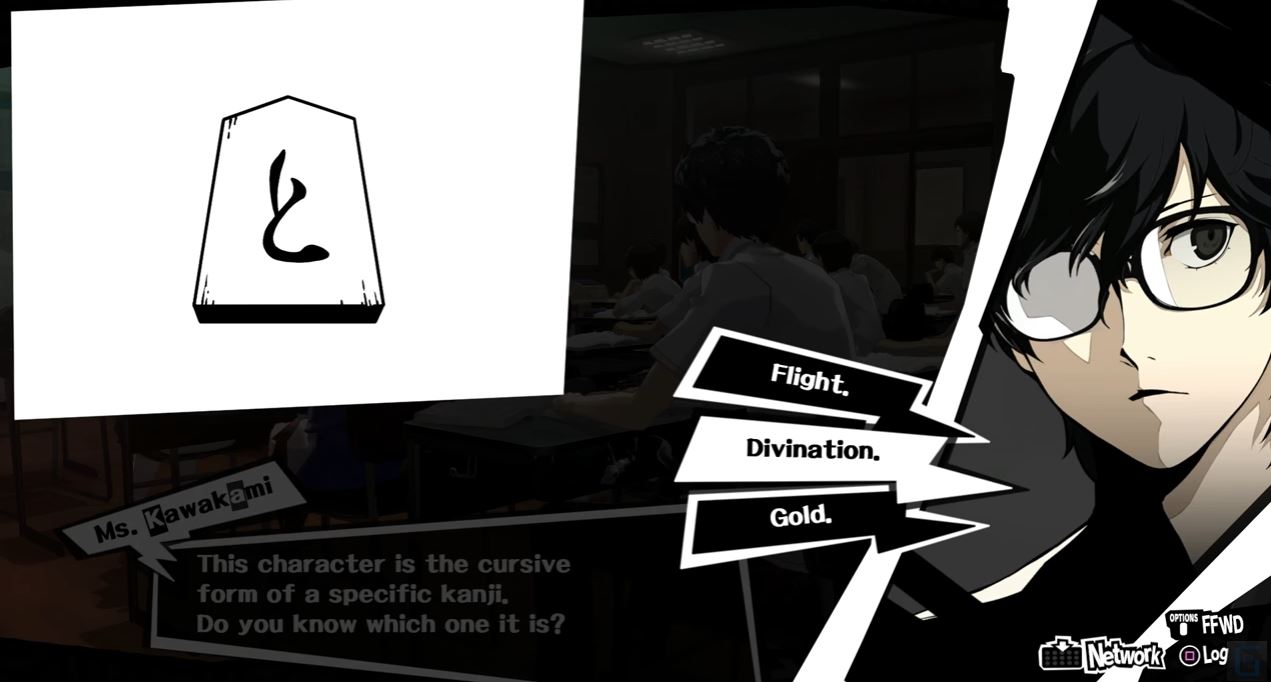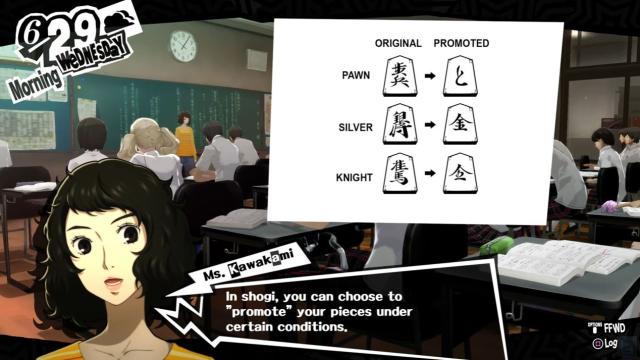Persona 5, an otherwise wonderful game, definitely has some localisation issues. You can find many examples of clunky writing and awkward translation decisions, but this one might be the biggest flub of them all, for a variety of reasons.
Nathaniel Chapman, a senior encounter designer for World of Warcraft, pointed out the particular spot on his personal Twitter account this morning.
Seperately, no spoilers for anything important, but this quiz is both bad loc AND wrong factually: https://t.co/4Gdr3O0WDZ
— Nathaniel Chapman (@pedrothedagger) April 11, 2017
One day while you’re in class, the teacher shows you a Japanese character written in a cursive, free-flowing hand, and asks you what the meaning of the character is.

The ostensible answer is “gold.”
“First, that’s just wrong,” Chapman writes; “that’s not a cursive 金, it’s a cursive と. It’s short forと金, the 2nd [character] of which is gold.” So already, the translation is inaccurate.
Kotaku later received a response from Atlus, and Chapman has done some digging into Japanese-language sources to attempt to get to the bottom of this. Here are the results:
“Regarding the ‘gold’ character in question, in Japan this is a trick question because the cursive kanji of ‘gold’ looks exactly like the standard hiragana ‘to.’ So gold appears to be accurate,” said an Atlus spokesperson.
Is that actually the case? Chapman points to a Japanese essay that states that the character on the shōgi piece referenced in the game could have derived from 金 (“kin” meaning gold) or 今 (also “kin” but not meaning gold), and in fact the essay writer does lean towards the character that means “gold” as the likely progenitor. But it doesn’t seem like the character in question could be described simply as, as Persona 5 does, a “cursive form” of the kanji — let alone the cursive form. “The original Japanese doesn’t imply that level of specificity,” Chapman told Kotaku, making it a “minor” translation error.]
But here’s the rub, as Chapman goes on to point out: even if the translation had been accurate, what the hell is this doing in a game being sold to an American audience? The object in question here is a piece from the popular Japanese board game shōgi — a “minorly tricky” bit of trivia if you grew up in Japan, as Chapman notes, but completely impossible if not.
In this case, leaving the question exactly as it is in Japanese would fundamentally alter the player’s experience. This is where the art of localisation, as opposed to straight translation, would preserve the experience — had the question simply been removed and replaced with a question about, say, the origins of a chess piece, it would have given American players the same type of challenge as is being presented to Japanese players here.
Instead, it is, as Chapman put it, “a complete combo fail.”

Comments
5 responses to “This Might Be Persona 5’s Biggest Localisation Fail”
Still havnt even got the game yet. It’s sold out everywhere in Melbourne. Eb, JB, Big W and Target, it’s all gone!
What am I going to play on Easter Long Weekend?
Psn?
Luckily I just spent about 80 hours playing Yakuza 3, so my Shogi knowledge is slightly above ‘non-existant’.
Yeah this character looks exactly like ‘to’.
The game has actually had a fairly mediocre localization overall. Lots of stuff where they’ve left a completely literal translation and as a result stuff looks quite unnatural in English.
Why would anyone expect western references in a game of eastern origin? How is changing the original culture reference preserving anything? I play non-western games to get away from western culture, to experience something different. I don’t demand that everything be changed to something familiar and stale (to me). I know of chess, maybe I’d be interested in shogi, it’s interesting to see these differences and learn about them instead of sweep them under the rug.